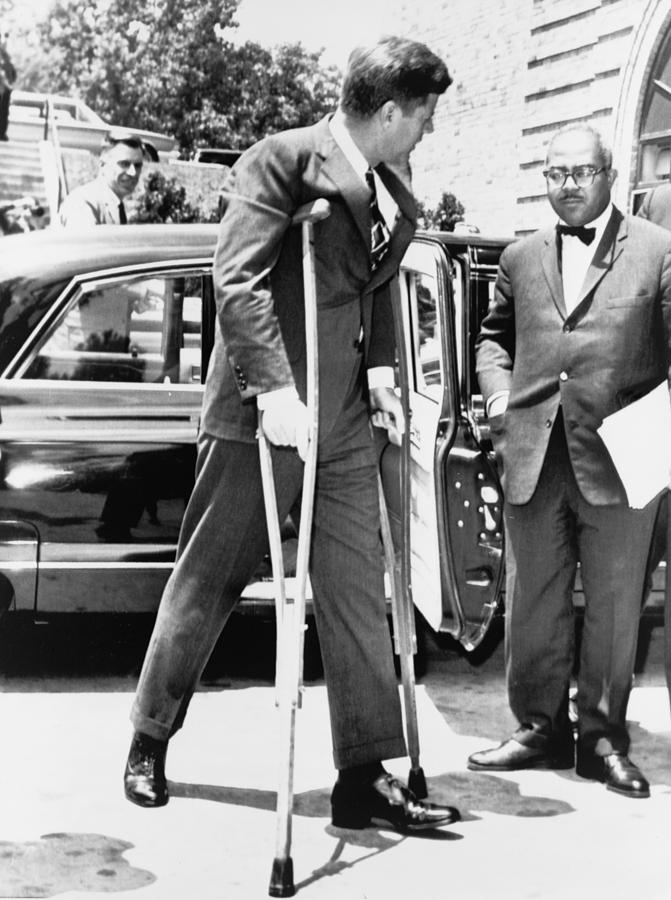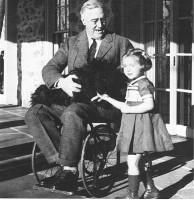
Disabilities in Public Life
Fifty-two years ago, in 1960, Massachusetts Senator John Fitzgerald Kennedy threw his hat into the ring as a presidential contender. In November of that same year, at the age of 43, Kennedy would be elected as the United States of America’s 35th president thanks to a combination of his father’s wealth and political connections, his own oratorical skill as well as his ability to convince the American people that he could reform Washington. He would do so by implementing what he called the “New Frontier,” a modern and more accommodating foreign and domestic policy agenda which, amongst other things, sought to end partisan bickering and gridlock in Washington, to minimize poverty and to beat the USSR in the space race. In the eyes of many, the young, vigorous and photogenic president himself appeared to be the perfect man to steer America towards its New Frontier of progressivism. However, few Americans knew that behind the thin veneer of publicly-projected vigour was a man who was anything but healthy.
Jack Kennedy, as he liked to the called, suffered from debilitating back pain which resulted from injuries he sustained when his torpedo boat PT109 was rammed and sank during the Second World War. Between the end of the war and the beginning of his presidency, he underwent two serious back surgeries that nearly left him crippled. For the rest of his life, Kennedy would be in severe physical pain and would often require the use of crutches to move around the White House, not to mention daily dosages of medication to keep his chronic pain under control as he conducted the nation’s business. To make matters worse, he also spent his entire life battling Addison’s disease, a disease which severely lowers the ability of one’s immune system to fight off infection. But Americans were unaware of their president’s physical frailty since Kennedy refused to allow the press to photograph him on crutches for fear that, if the public knew that he was not the healthy man he projected, he would be rejected by the American people and seen as weak and vulnerable by America’s enemies.

Kennedy was not the first president to hide his ailments from both the press and the public. Another Democrat, Franklin Delano Roosevelt, America’s only four-term president, spent the second half of his life paralyzed and wheelchair-bound from contracting polio at the age of thirty-nine. When Roosevelt ran for the presidency in 1932, he too took every measure possible to hide his disability from the American people fearing that they would not elect a president who could not walk. For instance, he wore special leg braces which allowed him to stand upright. He would arrive at the podium to deliver a speech well in advance of any spectators and would not move away from the podium until well after the last of the press and the audience had left the venue, thereby preventing the American public from seeing that he could not walk. In order to convince Americans that he was not disabled but healthy, Roosevelt drove a car in which the gas, brake and clutch pedals were secretly operated by hand levers hidden below the window line. And, of course, he too refused to allow the press to see him in his wheelchair or from any vantage point that revealed his leg braces. For the most part, like Kennedy, Roosevelt’s strategy worked. Very few pictures of him revealed his disability and, as the saying goes, the public cannot know what the press doesn’t see.
American presidents are not alone in going to great lengths to hide their health problems from the public in the fear that being handicapped or ill could translate into a political drawback on election day or an unfavorable perception in the court of public opinion. For instance, throughout the 1980s and 1990s, Diana, the late Princess of Wales, suffered from manic-depressive disorder, anorexia and bulimia. It is alleged that she cut herself numerous times and flirted with suicide on several occasions. Yet, aside from her admitting publicly that she had suffered from “eating disorders” in the past, very few knew that the Princess had many more serious psychological problems. The Royal Family made every effort to prevent this information from becoming public knowledge and it remained confidential for more than a decade after her death in 1997.
American First Ladies have also hidden their illnesses and disabilities from the public for fear their health problems would reflect poorly upon the approval ratings of the president. For instance, Ida McKinley, the wife of Republican William McKinley, who served as the President of the United States at the turn of the twentieth-century, suffered from epilepsy. She was rarely photographed candidly and, when she had a seizure, the president would quickly cover his wife’s face with his handkerchief in an effort to hide the effects of her seizure from any witnesses but also to calm her down since, in her case, darkness helped to alleviate the symptoms of the seizure. But if Republican presidential challenger Mitt Romney wins this November’s presidential election, the historical pattern of public figures and their spouses hiding their disabilities or illnesses will be over.

Ann Romney has broken with tradition by refusing to hide her health problems from the public. Fourteen years ago, she was diagnosed with Multiple Sclerosis (MS), a disease that strikes close to half a million Americans and which wages war on the body’s immune system and erodes the protective covering of nerve bundles in the spinal cord. It is a disease which can be treated but not cured. Multiple Sclerosis leads to extreme pain, muscular rigidity, severe exhaustion and possibly paralysis. While on the campaign trail with her husband, in a number of high-profile interviews with leading American newspapers like the Wall Street Journal and USA Today, Ann Romney recently openly discussed her struggle with MS and how the disease has affected her life. She is adamant about eliminating the taboo that disabilities still carry in political life — albeit now to a much lesser degree than in the era of both Franklin Delano Roosevelt and John Fitzgerald Kennedy. Times have changed and, today, ordinary citizens living with a disability or chronic disease no longer always seek to hide that reality under a cloak of false normalcy. Why should it be any different for a public figure?













